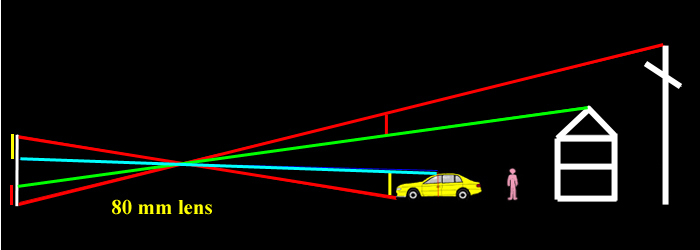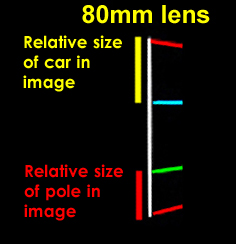How
does the focal length of a lens affect perspective?
Different
focal length lenses affect visual perspective in various ways.
The focal length of the lens can also dictate where we place
the camera in relationship to the the subject - we call this
view point. With a wide angle lens we might need to move closer
to the subject to fill the frame - while with a telephoto
lens we might need to locate ourselves further back from the
subject.
The
effect of perspective relates to the principle of a vanishing
point where the imaginary lines in an image meet at a single
point in the distance.
Wide
angle lenses tend to produce a visually distorted effect,
making objects close to the lens seeming abnormally large
while objects in the background become smaller. The wider
angle of view the wide angle lens produces the more the distortion.
On
the other hand, Telephoto lenses, tend to compress objects
within the normal perception of perspective - the longer the
focal length of the lens, the greater this effect becomes.

Move
over image to view roll over image


|
In
the diagram above we can see why this
happens. When an image of the scene is projected
back to the film or CCD, with the 80mm lens,
the proportion of the film covered by the car, the
thick yellow vertical line marked by the upper red
and the upper blue diagonal lines)
This
changes when we use the 20mm Lens.
While
the proportion of the film covered by the top
of the house, the thick red line marked by the
green line and the top of the lamp post the lower
red line decreases.
|
As
the focal length or power of the lens is increased the object
being photographed begins to fill more and more of the frame.
In the example above we can see that with a wide angle lens
there is more space on each side of the plant while with
the telephoto the space is reduced to a minimum.